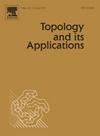等变参数上同调指南
IF 0.5
4区 数学
Q3 MATHEMATICS
引用次数: 0
摘要
本文研究了由costenable - waner提出的关于紧李群G作用的空间的等变参数胞上同调,该理论将G空间B的RO(G)梯度上同调推广到RO(G)梯度上同调(ΠB),即B的等变基群的表示。本文对该理论进行了指导,并包含了一些新的计算。我们解释了当G是有限群时定义参数化胞上同调的关键成分,特别注意了环群G=C2的情况。我们计算了一些例子,观察到RO(ΠB)并不总是免费的。当G是平凡群时,我们解释了如何用局部系数上同调来识别等变参数化胞上同调。最后,我们用G=C2和G=C4的几个空间的参数化胞上同调的一些新的计算来说明这一理论。本文章由计算机程序翻译,如有差异,请以英文原文为准。
A guide to equivariant parametrized cohomology
This article investigates equivariant parametrized cellular cohomology, a cohomology theory introduced by Costenoble–Waner for spaces with an action by a compact Lie group G. The theory extends the -graded cohomology of a G-space B to a cohomology graded by , the representations of the equivariant fundamental groupoid of B. This paper is meant to serve as a guide to this theory and contains some new computations.
We explain the key ingredients for defining parametrized cellular cohomology when G is a finite group, with particular attention to the case of the cyclic group . We compute some examples and observe that is not always free. When G is the trivial group, we explain how to identify equivariant parametrized cellular cohomology with cellular cohomology in local coefficients. Finally, we illustrate the theory with some new computations of parametrized cellular cohomology for several spaces with and .
求助全文
通过发布文献求助,成功后即可免费获取论文全文。
去求助
来源期刊
CiteScore
1.20
自引率
33.30%
发文量
251
审稿时长
6 months
期刊介绍:
Topology and its Applications is primarily concerned with publishing original research papers of moderate length. However, a limited number of carefully selected survey or expository papers are also included. The mathematical focus of the journal is that suggested by the title: Research in Topology. It is felt that it is inadvisable to attempt a definitive description of topology as understood for this journal. Certainly the subject includes the algebraic, general, geometric, and set-theoretic facets of topology as well as areas of interactions between topology and other mathematical disciplines, e.g. topological algebra, topological dynamics, functional analysis, category theory. Since the roles of various aspects of topology continue to change, the non-specific delineation of topics serves to reflect the current state of research in topology.
At regular intervals, the journal publishes a section entitled Open Problems in Topology, edited by J. van Mill and G.M. Reed. This is a status report on the 1100 problems listed in the book of the same name published by North-Holland in 1990, edited by van Mill and Reed.

 求助内容:
求助内容: 应助结果提醒方式:
应助结果提醒方式:


